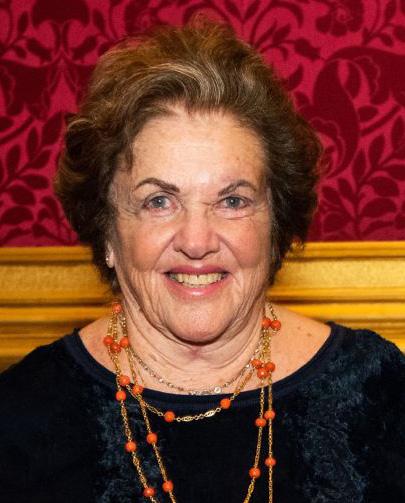
2 minute read
Jane Somerville (OQ 1944-50)
Did Queen’s prepare you for life after school?
You gain independence as a day pupil in a city. I travelled to school by bus, had to arrive on time, looking tidy and properly behaved.
Advertisement
There was always good pastoral care, which was one of the things I really liked about Queen’s. You knew if you had a problem there was always someone to go to.
I also learned the ability to communicate confidently and also to teach, to convey information. Whilst at school, my friend and I were asked to teach for three weeks when the Chemistry teacher left suddenly. The Biology and Physics teachers would check to see how we were getting on, but we didn’t have much supervision. I really liked teaching and thought the easiest way to understand a problem was if you had to explain it to someone else. This stood me in good stead for my medical career.
WRITTEN BY DERRY-ANNE HAMMOND
Jane Somerville, (OQ 1944-50) is a leading cardiologist and British emeritus professor of cardiology at Imperial College, London. She is best known for defining the concept and sub-specialty of adults with congenital heart disease (GUCH) and was one of the doctors involved in Britain’s first heart transplant in 1968. She was recently awarded the Mackenzie Medal, the highest honour conferred by the British Cardiovascular Society, by HRH The Princess Royal at St James’s Palace. Jane served as a member of the Council at Queen’s from 1967 to 2010 and the Somerville Hall is named after her.
What are your memories of Queen’s?
I enjoyed Queen’s very much. The teachers cared and were interested in the girls. In terms of specific memories, when I was in the Senior College we went to Box Hill for a week-long residential trip. We studied fungi by day and watched badgers by night. Botany was a main subject at Queen’s then and it has remained a lifelong interest of mine.
I was also evacuated with Queen’s during the war to Brackley in Northamptonshire, which was not a success for me as I was too young to go to boarding school. I was delighted when the College returned to London when I was ten years old!
Did you face obstacles applying to Medical School as a female student?
I trained at Guy’s in the 1950s when they had no time at all for female medical students. It was quite an obstacle just to get into Medical School. Then only 9% of applicants accepted were female, now it’s 62%. I didn’t really have any significant problems, although obviously I had to cope with sexist remarks.
Were there any barriers for a female doctor once you started applying for jobs?
I think you got the first job based on your academic record, although there were certainly employers that did not want females. I always thought we were being paid equally, but now I ask myself if that was really the case. Pay was just not a subject for discussion. I don’t remember any prejudice from patients; they were glad to see someone who cared.
You were a member of the Queen’s Council from 1967 until 2010. What changes took place during that time?
The College expanded. The curriculum developed and computers came in, that was a major change. Queen’s was very early in introducing computers and having a computer room. We also opened the Preparatory School while I was Chair of the Council.
Full articles can be found on OQConnect










